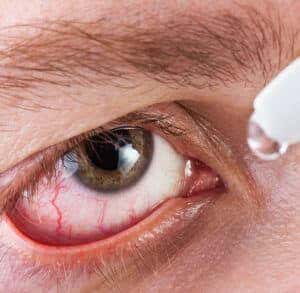
If you watch television chances are pretty good that you have seen commercials for Restasis for Dry Eyes. In one you are asked: “Do you use artificial tears often?” In another you are told by the beautiful TV patient, “But when my eye doctor said I have a disease that got my attention. ‘You have a disease called chronic dry eye caused by reduced tear production due to inflammation. I do too. I use Restasis’…”
We bet that when people watching these ads they hear that word disease and begin to worry. It sounds ominous. This person noted a side effect of Restasis for dry eyes not mentioned in the TV commercial:
Q. I have been bothered with dry eyes for a number of years. Recently I asked my optometrist if I could use Restasis for dry eyes, which I’d seen advertised on TV. He wrote the prescription and I’ve been using it for 10 weeks, one drop in each eye twice a day.
Quite honestly, I’ve noticed no improvement in the dry eye problem, but there is a disturbing side effect: blurred vision, which is getting worse by the day. Because of the blurred vision I’ve decided to stop using Restasis.
A. Restasis contains cyclosporine, an immunosuppressing drug. It was first approved in 1983 to keep people from rejecting transplanted organs. The eye drops are modestly effective at increasing tear production.
How Effective is Restasis for Dry Eyes?
The FDA reports the following results from clinical trials:
“Four multicenter, randomized, adequate and well-controlled clinical studies were performed in approximately 1,200 patients with moderate to severe keratoconjunctivitis sicca. RESTASIS® demonstrated statistically significant increases in Schirmer wetting of 10 mm versus vehicle at six months in patients whose tear production was presumed to be suppressed due to ocular inflammation. This effect was seen in approximately 15% of RESTASIS® ophthalmic emulsion-treated patients versus approximately 5% of vehicle-treated patients.”
We often find that such language is not terribly helpful. In trying to interpret the FDA’s summary, we conclude that in patients with chronic dry eye brought on by inflammation, six months of Restasis helped about 15% of them. That was 10% better than placebo (“vehicle-treated patients” got no active drug). How good is that? We leave it up to you to decide.
Restasis Side Effects:
According to the FDA, the most common complaint is a burning sensation (17%). Other adverse reactions include blurred vision, stinging, itching, pain, discharge and a feeling that something is stuck in the eye.
Your eye doctor needs to know that you are having difficulty with Restasis. There are other approaches to dry eye syndrome.

